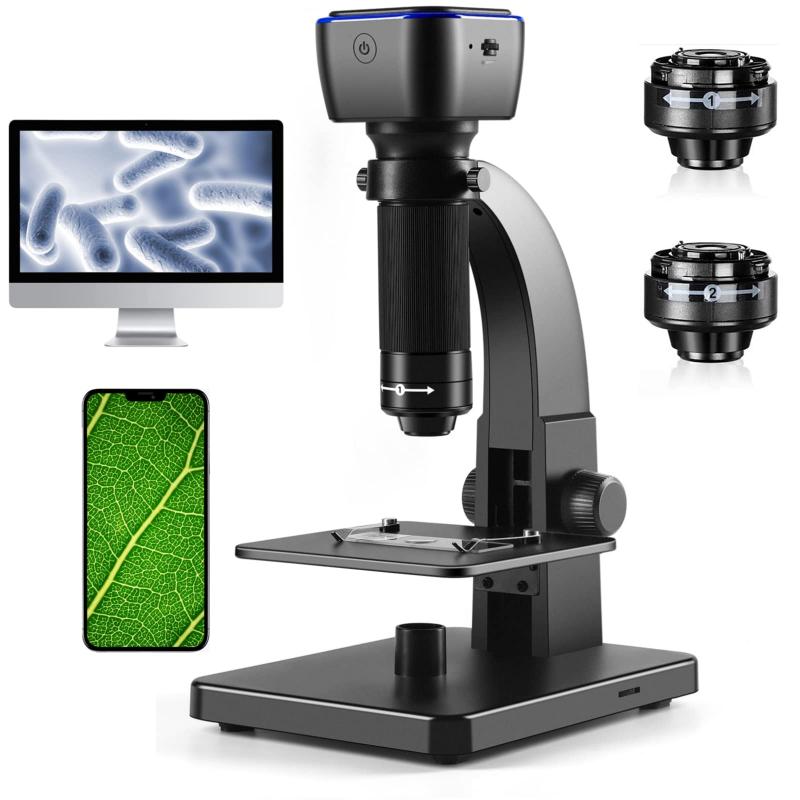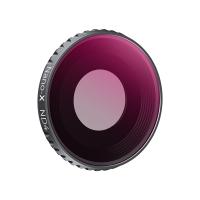Who Built The First Electron Microscope ?
The first electron microscope was built by Ernst Ruska and Max Knoll in 1931.
1、 Ernst Ruska and Max Knoll developed the first electron microscope.
Ernst Ruska and Max Knoll developed the first electron microscope. In the early 1930s, Ruska, a German physicist, began working on the concept of using electrons instead of light to magnify objects. He collaborated with Knoll, an electrical engineer, to build the first working electron microscope in 1931.
Their invention revolutionized the field of microscopy by allowing scientists to observe objects at a much higher resolution than was possible with traditional light microscopes. The electron microscope uses a beam of electrons instead of light to create an image, enabling researchers to see details at the nanoscale level.
Ruska and Knoll's electron microscope consisted of an electron gun that emitted a beam of electrons, which was then focused onto the specimen using magnetic lenses. The electrons that passed through the specimen were collected and used to create an image on a fluorescent screen or photographic plate.
Their groundbreaking work earned Ruska the Nobel Prize in Physics in 1986, recognizing his contributions to the development of electron optics and the electron microscope. Knoll, although not awarded the Nobel Prize, played a crucial role in the design and construction of the microscope.
Since Ruska and Knoll's pioneering work, electron microscopes have continued to evolve and improve. Modern electron microscopes can achieve even higher resolutions and offer various imaging techniques, such as scanning electron microscopy (SEM) and transmission electron microscopy (TEM). These advancements have enabled scientists to explore the intricate details of biological structures, materials, and nanotechnology.
In conclusion, Ernst Ruska and Max Knoll are credited with building the first electron microscope, a groundbreaking invention that has revolutionized the field of microscopy. Their work laid the foundation for further advancements in electron microscopy, allowing scientists to explore the microscopic world with unprecedented detail and clarity.

2、 Development of the first electron microscope by Ruska and Knoll.
The first electron microscope was developed by Ernst Ruska and Max Knoll in the 1930s. Ernst Ruska, a German physicist, and Max Knoll, an electrical engineer, collaborated to build the first working electron microscope at the Technical University of Berlin. Their groundbreaking work revolutionized the field of microscopy and opened up new possibilities for scientific research.
Ruska and Knoll's electron microscope used a beam of electrons instead of light to magnify objects. This allowed for much higher resolution and greater magnification than traditional light microscopes. The electron microscope was a significant advancement in microscopy, enabling scientists to observe structures and details at the nanoscale level.
The development of the electron microscope by Ruska and Knoll laid the foundation for further advancements in microscopy technology. Over the years, electron microscopes have become more sophisticated and powerful, allowing scientists to study a wide range of materials and biological specimens in unprecedented detail.
It is worth noting that there have been some debates and alternative claims regarding the development of the first electron microscope. Some argue that James Hillier and Albert Prebus, working at the University of Toronto, also developed an electron microscope around the same time as Ruska and Knoll. However, the general consensus in the scientific community is that Ruska and Knoll were the pioneers in this field.
In conclusion, the first electron microscope was built by Ernst Ruska and Max Knoll in the 1930s. Their groundbreaking work revolutionized microscopy and paved the way for further advancements in the field. The electron microscope continues to be an essential tool in scientific research, allowing scientists to explore the microscopic world with unprecedented clarity and detail.

3、 The invention of the electron microscope by Ruska and Knoll.
The invention of the electron microscope is credited to Ernst Ruska and Max Knoll. In the early 1930s, Ruska, a German physicist, began working on the concept of using electrons instead of light to magnify objects. He collaborated with Knoll, an electrical engineer, to develop the first practical electron microscope.
Ruska and Knoll's groundbreaking work led to the construction of the first electron microscope in 1931. This microscope used a beam of electrons instead of light to create magnified images of objects. By using electrons with much shorter wavelengths than light, they were able to achieve much higher resolution and magnification capabilities.
Their invention revolutionized the field of microscopy, allowing scientists to observe structures at the atomic level. Electron microscopes have since become indispensable tools in various scientific disciplines, including biology, materials science, and nanotechnology.
It is worth noting that there have been some debates and alternative claims regarding the invention of the electron microscope. Some argue that James Hillier and Albert Prebus, working at the University of Toronto, also developed an electron microscope around the same time as Ruska and Knoll. However, the general consensus in the scientific community is that Ruska and Knoll were the first to successfully build a practical electron microscope.
Regardless of any alternative claims, the invention of the electron microscope by Ruska and Knoll remains a significant milestone in scientific history. Their pioneering work laid the foundation for further advancements in microscopy and has greatly contributed to our understanding of the microscopic world.

4、 Ernst Ruska and Max Knoll: pioneers of electron microscopy.
Ernst Ruska and Max Knoll are widely recognized as the pioneers of electron microscopy and are credited with building the first electron microscope. In the early 1930s, Ruska, a German physicist, and Knoll, an electrical engineer, collaborated on developing a device that could overcome the limitations of traditional light microscopes.
Their groundbreaking work led to the construction of the first practical electron microscope in 1931. This instrument utilized a beam of electrons instead of light to magnify objects, allowing for much higher resolution and the ability to visualize structures at the nanoscale. The electron microscope revolutionized the field of microscopy and opened up new avenues for scientific research.
Ernst Ruska was awarded the Nobel Prize in Physics in 1986 for his contributions to the development of electron optics and the design of the electron microscope. Max Knoll, unfortunately, did not receive the same level of recognition, but his contributions were crucial to the success of their collaboration.
It is worth noting that while Ruska and Knoll are widely acknowledged as the pioneers of electron microscopy, there have been debates and discussions about the exact origins of the technology. Some argue that others, such as James Hillier and Albert Prebus, also made significant contributions to the development of electron microscopy around the same time.
However, regardless of these debates, there is no denying the immense impact of Ruska and Knoll's work. Their invention laid the foundation for modern electron microscopy, which has become an indispensable tool in various scientific disciplines, including biology, materials science, and nanotechnology.






























